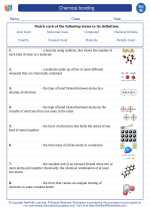Molecules
Let's understand the concept of molecules in detail!
What are Molecules?
A molecule is the smallest unit of a chemical compound that retains the chemical properties of that compound. It is made up of two or more atoms that are chemically bonded together. Molecules can be made up of atoms of the same element or different elements.
Molecular Structure
The structure of a molecule is determined by the arrangement of its atoms and the bonds between them. The arrangement of atoms in a molecule is called its molecular geometry. The way atoms are bonded together and the angles between the bonds influence the shape and properties of the molecule.
Types of Molecules
There are two main types of molecules:
- Diatomic Molecules: These are molecules composed of only two atoms of the same or different elements. For example, oxygen (O2), nitrogen (N2), and hydrogen chloride (HCl).
- Polyatomic Molecules: These are molecules composed of three or more atoms. Examples include water (H2O), carbon dioxide (CO2), and methane (CH4).
Molecular Bonding
Molecules are held together by chemical bonds, which are formed when atoms share or transfer electrons to achieve a stable configuration. The main types of chemical bonds in molecules are:
- Covalent Bonds: These bonds are formed by the sharing of electrons between atoms. They can be polar (unequal sharing) or nonpolar (equal sharing).
- Ionic Bonds: In these bonds, one atom donates an electron to another, resulting in the formation of positively and negatively charged ions that are attracted to each other.
- Hydrogen Bonds: These are weak bonds that occur between a hydrogen atom in one molecule and a highly electronegative atom (such as oxygen or nitrogen) in another molecule.
Molecular Properties
The properties of a molecule, such as its polarity, solubility, and reactivity, are determined by its molecular structure and the types of bonds it contains. Understanding the properties of molecules is crucial in fields such as chemistry, biology, and materials science.
Study Guide
To master the concept of molecules, it's essential to:
- Understand the difference between atoms and molecules.
- Learn about the types of chemical bonds and their role in forming molecules.
- Explore the concept of molecular geometry and its impact on the properties of molecules.
- Study examples of diatomic and polyatomic molecules to recognize their structural differences.
- Practice drawing Lewis structures and understanding molecular polarity.
By grasping these fundamental aspects, you'll build a strong foundation in understanding the world of molecules and their significance in the field of science.
[Molecules] Related Worksheets and Study Guides:
.◂Science Worksheets and Study Guides Eighth Grade. Chemical bonding
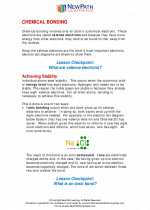
 Worksheet/Answer key
Worksheet/Answer key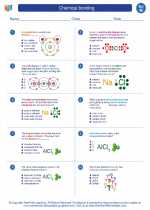
 Worksheet/Answer key
Worksheet/Answer key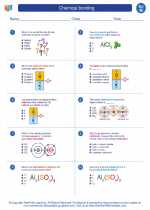
 Worksheet/Answer key
Worksheet/Answer key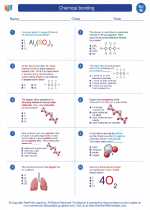
 Vocabulary/Answer key
Vocabulary/Answer key